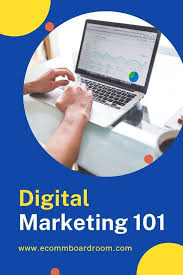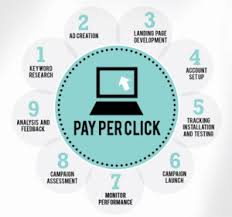Online Advertising 101
Online advertising has become a crucial component of marketing strategies for businesses of all sizes. With the vast reach and targeting capabilities of the internet, online advertising offers a powerful way to connect with potential customers and drive business growth.
Types of Online Advertising
There are various types of online advertising that businesses can utilise to reach their target audience:
- Search Engine Marketing (SEM): This involves placing ads on search engine results pages to drive traffic to a website.
- Social Media Advertising: Platforms like Facebook, Instagram, Twitter, and LinkedIn offer targeted advertising options based on user demographics and interests.
- Display Advertising: Banner ads, pop-ups, and other visual ads placed on websites to attract attention and drive traffic.
- Video Advertising: Ads displayed before or during online videos on platforms like YouTube.
- Email Marketing: Sending promotional messages directly to a user’s inbox.
The Benefits of Online Advertising
Online advertising offers several advantages over traditional forms of advertising:
- Targeted Reach: Online ads can be targeted to specific demographics, interests, and behaviours, ensuring that your message reaches the right audience.
- Data-driven Insights: Online advertising platforms provide detailed analytics that allow businesses to track the performance of their campaigns in real-time and make data-driven decisions.
- Cost-effective: Compared to traditional advertising methods, online advertising can be more cost-effective, allowing businesses to reach a larger audience within their budget constraints.
- Faster Results: Online campaigns can be launched quickly and adjusted in real-time, enabling businesses to see results faster than with traditional marketing methods.
Tips for Successful Online Advertising
To make the most of your online advertising efforts, consider the following tips:
- Know Your Audience: Understand your target market’s demographics, preferences, and online behaviour to create targeted ads that resonate with them.
- Create Compelling Ad Copy: Craft engaging ad copy that highlights your unique selling points and encourages users to take action.
- A/B Testing: Experiment with different ad formats, messaging, and targeting options to identify what works best for your audience.
- Maintain Consistency Across Channels: Ensure that your branding and messaging are consistent across all online channels for a cohesive brand experience.
Getting Started with Online Advertising: A Beginner’s Guide
Exploring Eight Varieties of Online Advertising Tactics
4. The Quintet of Core Principles in Effective Advertising
- What are the 3 types of online advertising?
- How do I start online advertising?
- What are 8 types of online advertising?
- What are the 5 principles of advertising?
- What are the 4 steps of digital advertising?
What are the 3 types of online advertising?
When delving into the realm of online advertising, it is essential to understand the various types that can be utilised to reach and engage with target audiences effectively. One frequently asked question on this topic is: “What are the 3 types of online advertising?” The three primary types of online advertising include Search Engine Marketing (SEM), Social Media Advertising, and Display Advertising. SEM involves placing ads on search engine results pages to drive website traffic, while Social Media Advertising leverages platforms like Facebook and Instagram for targeted promotions. Display Advertising encompasses visual ads such as banners and pop-ups on websites to attract user attention. By leveraging these diverse forms of online advertising, businesses can enhance their digital presence and connect with their desired audience in a meaningful way.
How do I start online advertising?
To start online advertising, the first step is to define your goals and target audience. Understand who your ideal customers are and what you want to achieve with your advertising campaigns. Next, choose the right online advertising platform that aligns with your goals, whether it’s search engine marketing, social media advertising, display ads, or email marketing. Create compelling ad copy and visuals that resonate with your target audience and drive them to take action. Set a budget that suits your objectives and monitor the performance of your campaigns regularly to make necessary adjustments for optimal results. Remember, starting online advertising is about strategic planning, effective execution, and continuous optimization to reach your desired outcomes.
What are 8 types of online advertising?
One frequently asked question in the realm of online advertising 101 is: “What are the 8 types of online advertising?” Understanding the various forms of online advertising is crucial for businesses looking to effectively reach their target audience in the digital landscape. The eight types of online advertising commonly utilised by businesses include Search Engine Marketing (SEM), Social Media Advertising, Display Advertising, Video Advertising, Email Marketing, Native Advertising, Affiliate Marketing, and Influencer Marketing. Each type offers unique advantages and targeting capabilities that can help businesses achieve their marketing goals effectively.
What are the 5 principles of advertising?
In the realm of online advertising, understanding the five fundamental principles of advertising is essential for crafting effective campaigns that resonate with your target audience. The first principle is attention, where your ad must capture the viewer’s attention amidst a sea of digital content. Next comes interest, where you must pique curiosity and engage viewers with compelling messaging. Desire follows, as your ad should evoke emotions and create a desire for your product or service. Action is crucial, prompting viewers to take a specific action such as visiting your website or making a purchase. Lastly, consistency plays a key role in reinforcing your brand message across various online platforms to build brand recognition and loyalty.
What are the 4 steps of digital advertising?
In the realm of digital advertising, understanding the four fundamental steps is crucial for a successful campaign. The first step involves defining clear objectives and identifying the target audience to ensure that the message resonates effectively. Next, strategizing the ad placement across various online platforms plays a pivotal role in reaching the desired audience. Crafting compelling ad creatives that capture attention and drive engagement is the third step, followed by monitoring and analysing campaign performance to make data-driven adjustments for optimal results. By following these four key steps diligently, businesses can maximise the impact of their digital advertising efforts and achieve their marketing goals efficiently.



